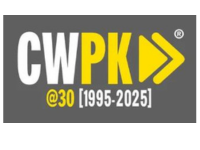Recently, a number of excellent reports and findings have enlightened the people about digitalisation of Pakistan’s economy. It is heartening to see a dramatic increase in the use of the internet, maybe more so due to Covid-induced push to become tech-savvy. While in 2016, Kantar Icube gave a figure of 22% for internet penetration, the latest 2021 figure is 54%.
In Pakistan, Covid has pushed the adoption of internet purchasing. Due of Covid lockdowns, 35% of Pakistani shoppers are new to the digital economy. Mobile internet data usage has also surged by more than 600 percent, from 614 petabytes in 2016-17 to 4,498 petabytes in 2019-20. According to a Google survey, YouTube is the second most popular app in Pakistan, and it is used for a variety of purposes, including taking online classes for personal or professional purposes.
This is fascinating to observe, as it demonstrates that the internet can be utilised for productive purposes. Non-users, on the other hand, are bound not only by accessibility but also by familiarity, according to the survey. Affordability was also mentioned in the GSMA 2020 study as a barrier to internet use. While 20 percent of Pakistanis do not have access to the internet, this statistic is significantly greater than that of regional peers Bangladesh (5 percent), India (10 percent), and Indonesia (10 percent) (5 percent ).
The concerning part of this is that against 66% of the urban people, in rural areas the figure of internet usage is 47%. On top of that, only 39% of females are users of the internet and only 52% of the women are mobile owners in Pakistan. Among regional partners, Bangladesh has 64% and India has 67% of females with ownership of mobile phones. These figures are important as they determine their eventual tendency to use the internet.
Women are denied access to critical information and online services due to unequal access to internet facilities. It also limits their ability to meet their daily requirements successfully in a digitalized market. In terms of women’s empowerment, Pakistan appears to be doing quite poorly. The importance of gender issues in digitization in general is underappreciated.
Information and communication technologies (ICTs), as well as its impact on and use as a tool for women’s growth and empowerment, are seen as critical globally. The influence of digitization on women, as well as its use as a tool for empowerment and gender equality promotion, has been thoroughly documented. Women’s social, political, and economic empowerment can all benefit from digitalization.
Increased access to local and international markets for women producers and merchants, as well as greater access to jobs, education and training, and entrepreneurial opportunities, can improve women’s economic livelihoods. To some extent, urban women have begun to seize opportunities.
Through internet-mediated delivery channels, they have enhanced their access to health, nutrition, education, and other human development opportunities, such as political engagement. However, the changing nature of labour in the digital economy has a lot of space for development. Women are unable to participate in the information economy due to high rates of illiteracy and a lack of digital skills.
There is still a long way to go, despite the government’s introduction of the “Ehsaas Digital Hunar Program,” which is aimed to provide three to six months of virtual programmes with in-demand market skills and 100 percent employability for the youth.
Impediments
Many Pakistani women are unable to use technology for economic advancement due to its high cost. Aside from women’s unequal and unaffordable access to internet facilities and services, other impediments include a lack of appropriate material and apps, particularly in local languages tailored to the requirements of illiterate women.
Because Pakistani women are less likely than men to know English, the English-language dominance in software and content has a greater impact on women. In addition, there are no longer any cultural barriers in society. Even when women have the requisite talents, cultural barriers such as conventional ideas of men and women’s roles, as well as women’s lack of autonomy, continue to limit their opportunities.
There is an urgent need to ensure that women enjoy the huge potential for social and economic empowerment offered by digitalisation and participate effectively in all aspects of the field.
Suggestions
Making digitization policies gender-sensitive is critical to ensuring that girls and women benefit from the information age. Increased, deliberate, and concentrated investment in women’s training is needed to assist them break into the digital economy.
In order to improve their economic competitiveness and production, educated women should be encouraged to learn ICT skills. The government should take real initiatives to expand the number of female students studying technology and working in ICT occupations at all levels, particularly in hardware design and production and software engineering.
It is important to increase the number of women researchers, scientists, educators and administrators, especially at tertiary levels, in this field. Given the wide range of specialists required at all levels, building institutional capacity deserves special attention. The government should promote women’s entrepreneurship in the digital sector, including by supporting role models, encouraging the creation of networks and mentoring programmes, development of business support programmes and linkages between the local people and Pakistani diaspora.
To improve economic possibilities and foster entrepreneurship skills, it is also critical to establish digital information systems with appropriate content for women, including information about national economic and trade policies and programmes. The government should create programmes to help women entrepreneurs keep up with rapid technological advances and expand their economic opportunities, as well as mobilise resources to encourage innovative projects that promote gender equality in the digital industry.
Women’s economic knowledge and engagement must be improved through the use of digital technology. Every woman should be able to gain the essential skills and information to comprehend, actively participate in, and fully benefit from the digitisation of the economy.
Building a fully inclusive digital society requires literacy and universal primary education, as well as attention to the unique needs of women.









